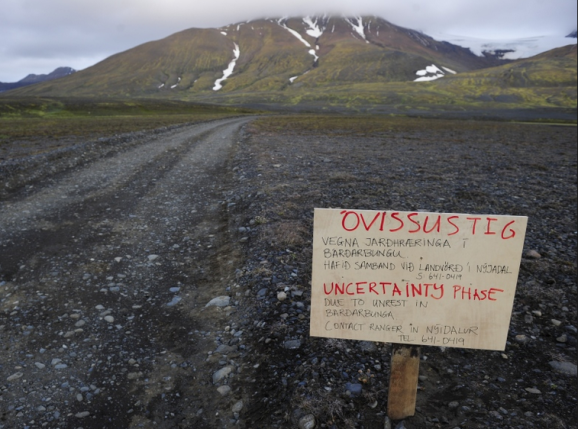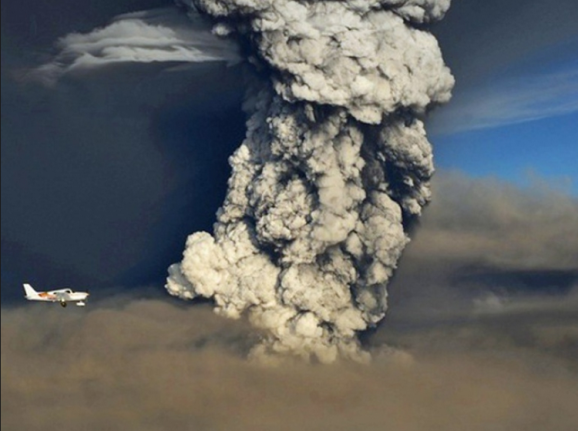Another Icelandic Volcano Is Getting Ready To Erupt
This article is more than 2 years old
 Remember four years ago when the eruption of Icelandic volcano Eyjafjallajökull wreaked havoc on flights around the world, ultimately causing more than 100,000 cancelations and loses upwards of $2 billion? (You can see a video of what the area looks like now.) A year later, Iceland’s Grímsvötn volcano erupted, causing more of the same. Now, the small contry’s Meteorological Office has announced that they are is bracing for another major eruption, this time the Bardarbunga volcano is set to blow.
Remember four years ago when the eruption of Icelandic volcano Eyjafjallajökull wreaked havoc on flights around the world, ultimately causing more than 100,000 cancelations and loses upwards of $2 billion? (You can see a video of what the area looks like now.) A year later, Iceland’s Grímsvötn volcano erupted, causing more of the same. Now, the small contry’s Meteorological Office has announced that they are is bracing for another major eruption, this time the Bardarbunga volcano is set to blow.
Over the past week, the region under and around Bardarbunga has experienced roughly 1,000 small earthquakes, which is usually a sign that a major geological event is about to happen. In fact, 568 of those earthquakes were recorded in a single day.

The Meteorological Office confirms that a “subglacial” eruption has already begun, as has the melting of ice under Vatnajökull, but it’s not clear if or when an above-ground eruption will occur. Still, Iceland has gone on the offensive, issuing a red aviation alert—the highest on their scale—that warns of the possibility of “significant emission of ash into the atmosphere.” Just how much ash depends on a number of factors, primarily the thickness of the ice. Thicker ice contains more water, which makes for a bigger explosion and the release of more ash. Scientists planned to conduct an aerial survey of the glacier today, but due to recent developments and warning upgrades it’s unclear if that will still happen.
If you’ve got European travel plans in the upcoming weeks, keep your fingers crossed and buy travel insurance. If you’re into natural disaster porn, you’re in luck—there’s a webcam set up about 20 miles from the crater where scientists think the eruption would begin.












